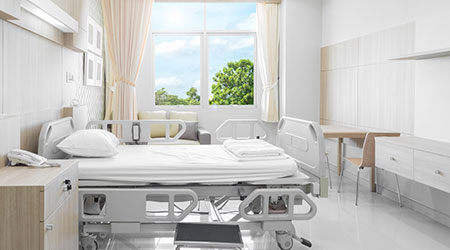As the nation’s hospitals approach a full year of dealing with the COVID-19 pandemic, facility managers and other healthcare officials are taking stock of the lessons learned along the way and how those lessons will play out in the future. One of the most important issues is the way the pandemic is changing the design, construction and renovation of facilities in order to adapt to the new realities.
One major problem faced by many hospitals is a shortage of beds, according to Business World. Emergency rooms and ICUs were filled with patients, and the hotels and other spaces were forced to be converted into the COVID19 facilities. Hence, many experts are suggesting that future hospital designs should be made more flexible to accommodate more people in case a similar situation occurs in the future.
As the virus is spreading, it is obvious that the new normal calls for new approaches in hospital building, design and architecture, such as the need to modify existing facilities to quickly create isolation and contamination zones.
Additional innovations in the healthcare systems also are happening at a rapid rate. There have been portable digital clinics, which are protected with UV-C light disinfection. Also, doctors are meeting patients over video calls, and examinations are happening in a much shorter time with a barrier between the patient and the doctors and nurses.
Click here to read the article.

 UF Health Hospitals Rely on Green Globes to Realize Their Full Potential
UF Health Hospitals Rely on Green Globes to Realize Their Full Potential How Healthcare Facilities Can Be Truly Disaster-Resilient
How Healthcare Facilities Can Be Truly Disaster-Resilient TriasMD Breaks Ground on DISC Surgery Center for San Fernando Valley
TriasMD Breaks Ground on DISC Surgery Center for San Fernando Valley Bigfork Valley Hospital Falls Victim to Data Breach
Bigfork Valley Hospital Falls Victim to Data Breach AI-Driven Facilities: Strategic Planning and Cost Management
AI-Driven Facilities: Strategic Planning and Cost Management